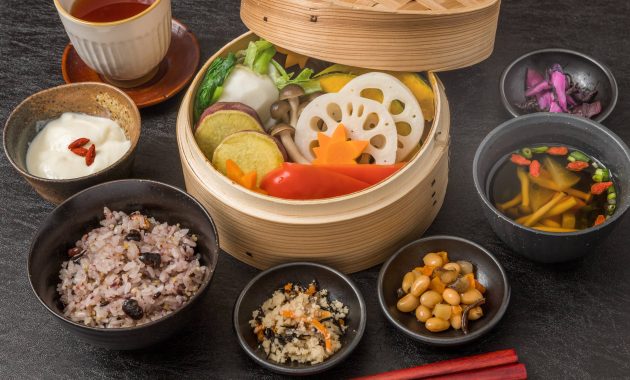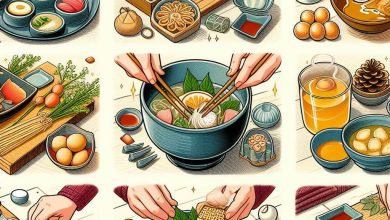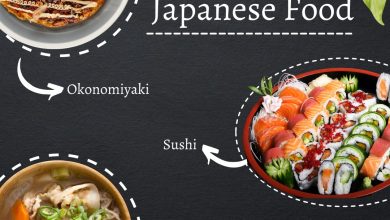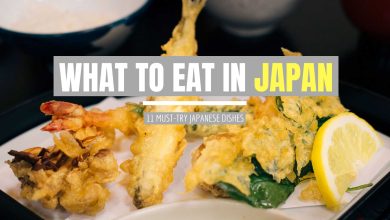Seasonality in Japanese cuisine
In Japan, they are very proud of the fact that they have four seasons, the change of which can be clearly traced. Sometimes the Japanese are genuinely surprised when they learn that other countries also have four quite distinct seasons. We can’t say where such confidence in our own uniqueness came from (if you know the answer.
then write in the comments under the article), but as a result, dishes that personify the seasons have become a hallmark of Japanese cuisine. By the way, according to the Heian tradition, in Japan there are not four, but twenty-four minor seasons. And if you eat the first seasonal herb or fruit (- hatsumono), then add 75 years to your life. Seasonal ingredients that turn out to be the best for a particular period are referred to as xiong (- shun).
When you are served a dish in Japan, try to treat it like a puzzle and don’t try to eat everything on your plate, just because some elements can be put in for beauty and emphasizing the current season (for example, carved paper red maple leaf). The principle of focusing on seasonality of products is also related to the fact that the Japanese do not stockpile and use only fresh products.
Also, the color scheme of the dish is determined by the season, so in winter dishes should be white, in autumn – yellow and orange, in spring – pink and green, in summer – red and green or purple.

Basically, seasonality is typical for fish and seafood, as well as for fruits and vegetables. There is also a set of dishes that are served exclusively at certain times of the year.
Winter
Traditionally, fish and seafood are served on the winter table, because they are caught from icy water, and the Japanese believe that this is what gives the dish a special taste. Most often, seafood is consumed fresh, making sushi and sashimi out of them. The most popular are sea bass, crabs and shrimp.
Although we said above that the Japanese do not make supplies, nevertheless, the inhabitants of the Land of the Rising Sun love pickles and marinades, which are subjected to almost all vegetables, some types of fish and fruits. The most popular pickles are daikon, umeboshi, turnip, ginger, Chinese cabbage. They are served both as condiments and as a side dish.
You can buy sakura petals and leaves at the supermarket and cook any of the following dishes. To increase the shelf life, it is pickled in salt.
— Daifuku. This is a mochi stuffed with anko or bean paste.
– Various Japanese wagashi desserts. They are served in restaurants, temples and tea houses.
– Hanami dango. This is a dessert of three rice balls, two of which are flavored with sakura and matcha, and one is not flavored.
– Cherry macaroni. Seasonal trends have not bypassed European sweets.
Summer
During the hot season, the Japanese prefer to cool off. Hiyashi chuka (hiyashi chuka) becomes the main dish during the summer months. It consists of chilled ramen with various additions of vegetables, ham, eggs and soy sauce.
Not so cold, but just as tasty and traditional – unagi (- unagi) – eel fried on charcoal. Eel can be expensive in a restaurant, but it can be prepared at home for a trip to the park or a picnic.
There are also special sweets for the summer season, such as kakigori (- kakigori). It is a shaved ice that you can choose from several flavors of syrup to add, such as green tea, cherry, strawberry, etc.
Traditionally, kakigori was made using a manually operated machine, but more recently, the preparation of this sweet is automated, although in stores you can buy a manual machine for making kakigori at home.
And the “healthier” alternative during the summer months is watermelon. On a hot August day, a slice of watermelon can really cool you down. For ice cream lovers, there are special suika bars (“suika” in Japanese means “watermelon”), open in summer in supermarkets and shops, where you can taste watermelon in combination with ice cream or chocolate.

Autumn
In Japan, autumn is called the season of appetite (- syokuyoku no aki). The Japanese believe that it is in autumn that appetite increases. Magazines abound with articles on how not to gain weight and control your eating habits. So, below we provide a list of products that symbolize the autumn season of increased appetite:
Sweet potato (satsumaimo). They are used like regular potatoes – fried, pickled, boiled, and even made into sauces for desserts, as well as for making shochu (shōchū), a Japanese strong alcoholic drink.
Matsutake mushrooms (matsutake). The Japanese love them for their rich taste and use them quite sparingly. Due to the specific growing conditions, the price of mushrooms fluctuates from season to season. Matsutake should not be stored for more than 10 days, as old mushrooms can cause serious food poisoning.
Matsutake can be grilled, but is usually used in recipes with a variety of other ingredients in soups or rice, such as matsutake gohan.
Satoimo satoimo. Known in the West as the root of the taro plant.Taro root should be thoroughly washed with a brush before cooking. Satoimo is very healthy, but it gets a little slimy when boiled, which stops some people. Satoimo is usually stewed or lightly boiled in dashi broth, and is also added to soups.



